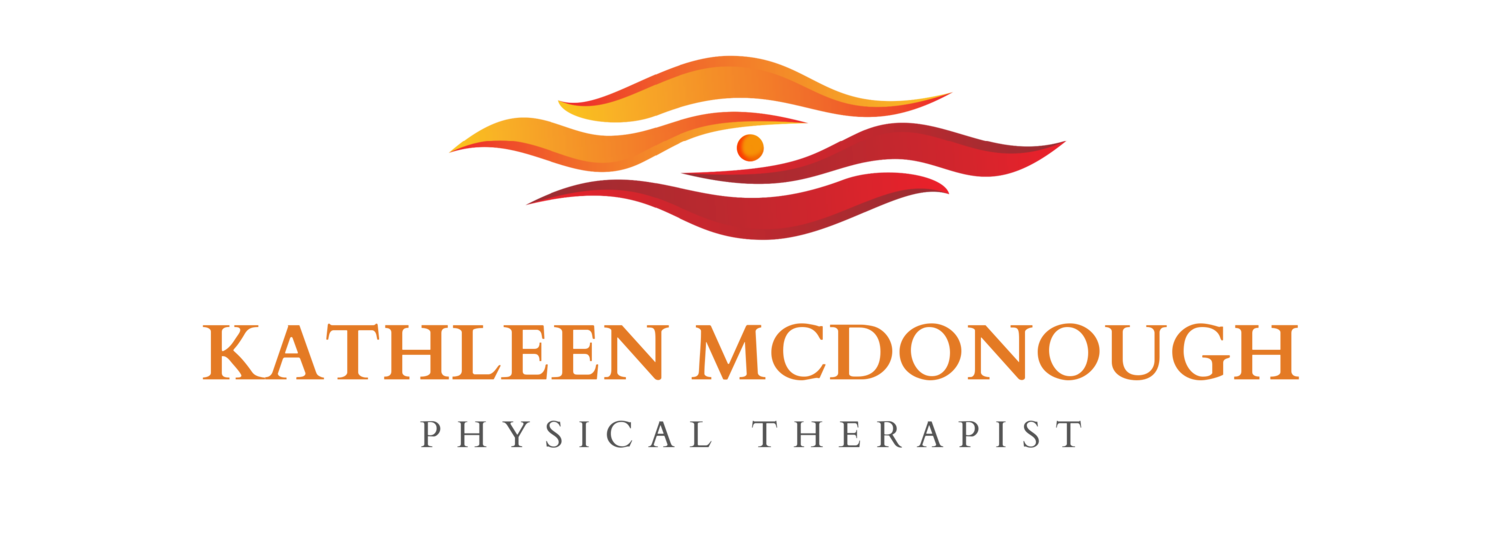Working From Home (Pt. 3)
For many of us, working from home has lots of interruptions: kids, dogs, cats on our laptops. But even with some of those breaks from working at our computers, we still are putting in way too many hours at a screen. Taking even a few minutes away from those screens is a great bit of self-care and stress relief. One of the best ways you can do this is by taking a break and work on your breathing. Breathing is a great way to relax and relieve stress.
Relieve Stress While Working from Home
Relax with your foam roller!
You may have a long foam roller at home that you have tried rolling your tight IT Band or thighs on (not very pleasant, and some would argue, not very effective either!). Well, there is a great way to use your foam roller to relax -- lie down on it!
Lie down on the roller with your spine fully supported from tailbone to head, knees bent and feet on the floor. Place your fingertips on the floor for balance, or better yet, lace your hands together on your belly and breathe. Just breathe. Big, full, expansive breaths. Allow your chest and rib cage to expand in all 3 directions: side to side, top to bottom, and front to back. As you exhale, let the air escape and then squeeze the extra air out by drawing your belly towards your spine (like zipping up into a tight pair of jeans – remember jeans? You have some gathering dust in your closet). Fully inhale and fully exhale, squeezing and exercising the muscles that help your ribcage expand and contract.
Then, with your fingertips on the floor for balance, roll your whole body side to side, keeping it level with the floor. Give yourself a little massage by rolling with the roller. Take big deep breaths as you roll, and if you find a particularly tight spot, stay there and breathe into it.
I always tell my clients: don’t avoid the roller because you don’t have 10 minutes to do all of your exercises on it. If all you have time for is 10 breaths, do that. You will re-set your brain’s perception of what “normal” posture is and feel taller and better for it.
Pilates and breathing
I am a physical therapist and also a Pilates teacher. A lot of physical therapy is about treating a problem; Pilates is about keeping optimal health so you don’t have the problem. Joseph Pilates was adamant about breathing; here is an excerpt from the National Pilates Certification Exam Study Guide:
“According to Pilates, active breathing is integral to overall body functioning, increasing respiratory volume capacity, oxygenation, and all physiological functions. Full, consistent inhalation and exhalation help the circulatory system nourish all bodily tissues with oxygen-rich blood while carrying away impurities and metabolic waste. Pilates referred to this cleansing mechanism as the “internal shower” which resulted in mental and physical invigoration and rejuvenation.”
When we are stressed, we don’t breathe fully. And, when we are in pain, we don’t breathe fully. When we slumped at our desks we cannot breathe fully. When we can’t breathe fully, we cannot exchange the air in our lungs fully, leaving stale air in them.
The need to de-stress
While we battle a pandemic, we need to more than ever breathe fully. We need to de-stress and move our bodies to stay healthy and sane. Interestingly, Joseph Pilates developed much of his philosophy while at an internment camp during WWI (he was a German, living in England at the time), and during the last pandemic: the Spanish Flu. His claim that no one got sick, thanks to doing his exercises, may or may not be factual, but we do know that cardiorespiratory fitness may help keep us healthy during our pandemic: COVID-19.
The American College of Sports Medicine recently posted that:
While exercise may not prevent us from becoming infected if exposed, it is likely that keeping active will boost our immune system to help minimize the deleterious effects of the virus, ameliorate our symptoms, expedite our recovery times and lower the likelihood that we can infect others with whom we come into contact.
4 Tips to Improve Your Work at Home
So, here’s my story and I’m sticking to it. To feel good, stay healthy, and de-stress:
Take breaks away from your computer.
Vary the positions for computer work: sit, stand, recline.
Take a few minutes away from your desk and get onto a foam roller.
Most importantly, BREATHE! Fully, deeply, often.
Summary
If you are working from home you need to take breaks away from your computer. Don't get glued to it. You will improve your health and your outlook if you follow my tips above as much as you can. And the healthier you are, the more productive you will be!
Stay well!
Kathleen McDonough
PT, MA, NCPT Physical Therapist &Nationally Certified Pilates TeacherMarin County


